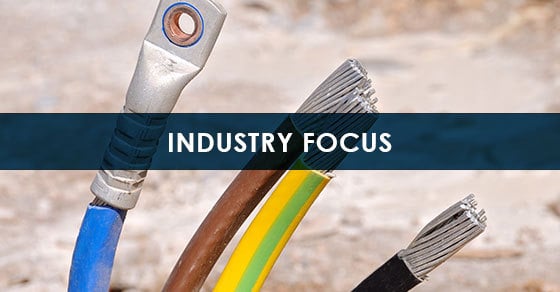As copper prices continue to rise in what many are calling a supercycle, industry experts are wondering if aluminum will finally gain real traction as an alternative to the red metal.
As a leader in copper and aluminum production equipment and process development services, we’re following this story closely.
Copper Demand (and why Supply Can’t Keep Up)
There seems to be no end in sight for the insatiable demand for copper. We’ve highlighted the many market trends and technical advancements that have led up to this point – copper’s growing role in smart cities, electric vehicles, and as a generally critical material in reaching a low-carbon economy.
The challenge with copper is that despite rising prices, miners have been hesitant to invest in new projects, creating an ever-widening gap between supply and demand – a reality highlighted by a recent International Energy Agency report.
Wood Mackenzie’s Julian Kettle, Senior Vice President and Vice Chair of Metals and Mining, discussed the trend recently, saying that between mine closures and falling ore grades, copper could be in real trouble without some big investment from miners:
“Currently, we estimate the industry has committed around US$120 billion in capex to expand production to offset the impact of grade decline and depletions. Nonetheless, without additional substantial investment, production will decline from 2024 onwards. Coupled with demand growth, this decline in output will lead to a theoretical shortfall of around 16 Mt by 2040.”
As is typical when copper (or any other essential material) prices spike, people start looking at alternatives, and once again, aluminum is first in line for copper’s throne.
Aluminum has long been recognized as a substitute for copper in some applications, with research ongoing to improve the challenges that have largely held it back thus far – most notably its lower conductivity.
While it’s true that copper is more conductive than aluminum, aluminum boasts a lighter weight than copper and costs significantly less, two major benefits that have the industry increasingly exploring aluminum as an alternative to copper in a growing number of applications.
After a surge in copper prices more than a decade ago, aluminum fell into favor for a few key applications in the auto industry, the electricity grid, and more; the switch to the lightweight metal stuck and it has now become standard in many settings.
In another commentary from Wood Mackenzie, Julian Kettle commented on how aluminum doesn’t get enough credit: “Too many forecasts ignore the fact that aluminum is a serious competitor to copper in a number of high volume applications, including high- and mid-voltage power cable, bushbars, transformer windings and motor windings.”
China is already working toward substituting copper with aluminum in anticipation of not being able to meet demand, according to Forbes.
Moving Forward With Aluminum
Demand for aluminum, both primary and secondary, has been on the rise in its own right as of late, owing to a number of market factors. And while aluminum is entirely recyclable, making it a highly sustainable material on one hand, its initial production is energy intensive and yields a high ratio of caustic bauxite tailings, or red mud.
This makes bolstering aluminum recycling infrastructure and investing in red mud valorisation development critical. Work around developing applications for red mud reuse and recovery has seen a growing interest in recent years as demand for aluminum continues to rise and the risks associated with tailings management become more evident.
The FEECO Innovation Center has seen this development first-hand as companies look to recover valuable components from red mud, or prepare it for use in other applications, such as in building and construction materials.

Samples taken during red mud testing in the FEECO Innovation Center
Conclusion
As copper prices continue to push all-time highs, the industry is looking at aluminum as a way to supplement supplies. And while this is an increasingly viable option, more demand for aluminum necessitates a solid circular economy in which aluminum can be used infinitely thanks to adequate recycling infrastructure, and beneficial reuse applications for red mud.
With a long history in waste valorization, and experience in both copper and aluminum processing, FEECO continues to be a key resource for helping companies to recover valuable components from waste streams, and developing processes to suit beneficial reuse applications. We also offer custom processing equipment including rotary dryers and kilns, coolers, agglomeration drums, and more. For more information on our process development capabilities, or our copper and aluminum processing and handling equipment, contact us today!

